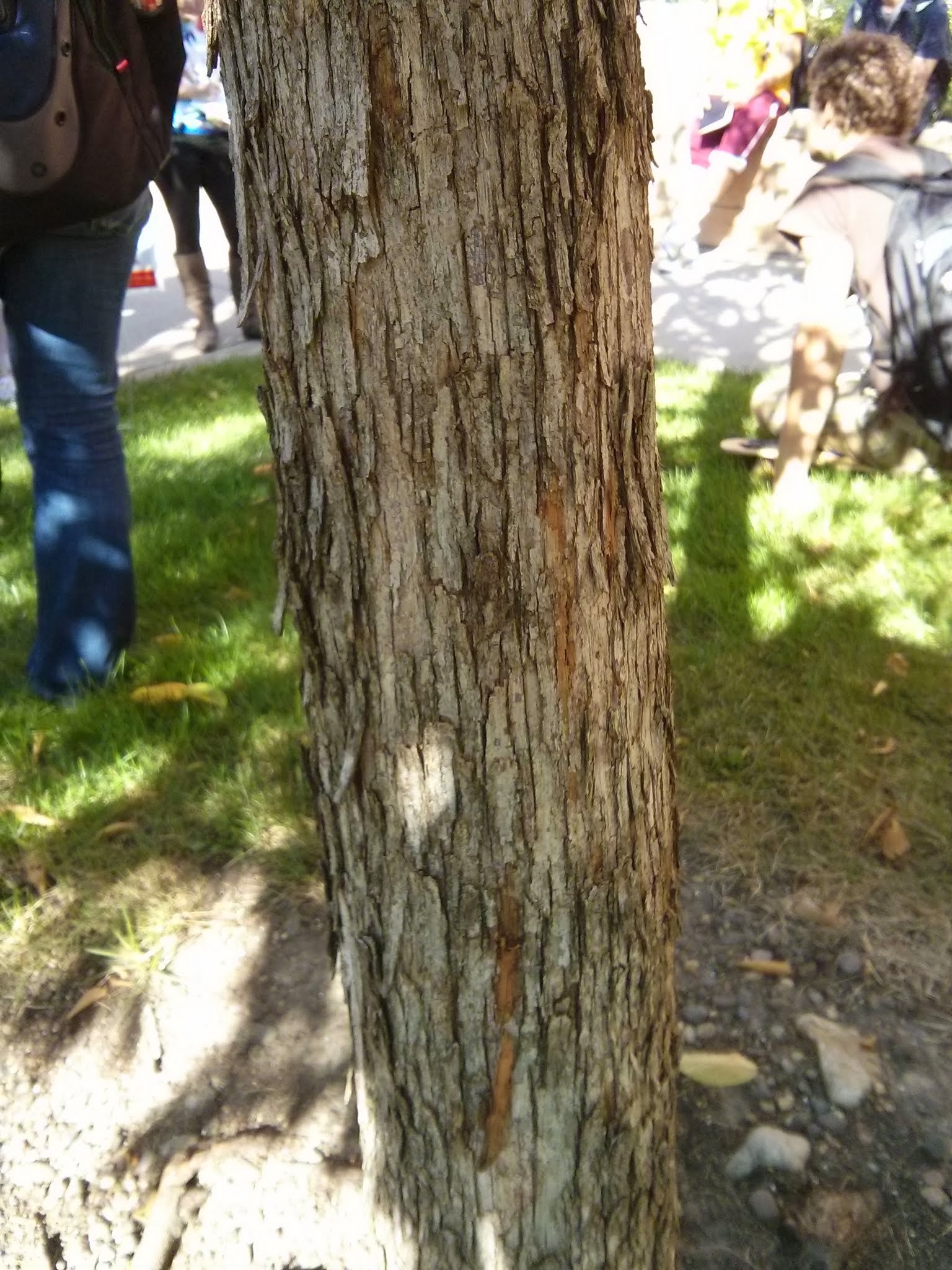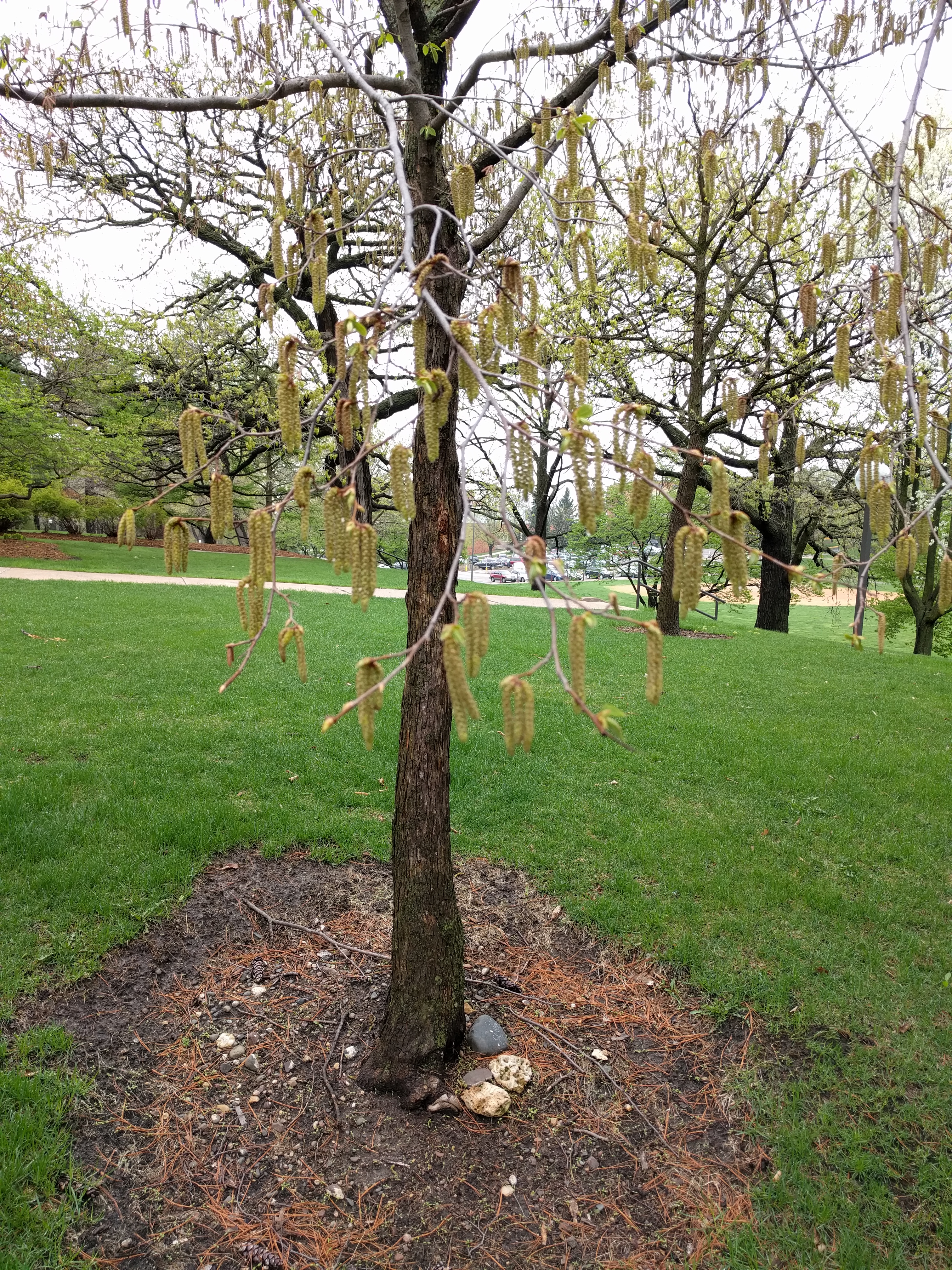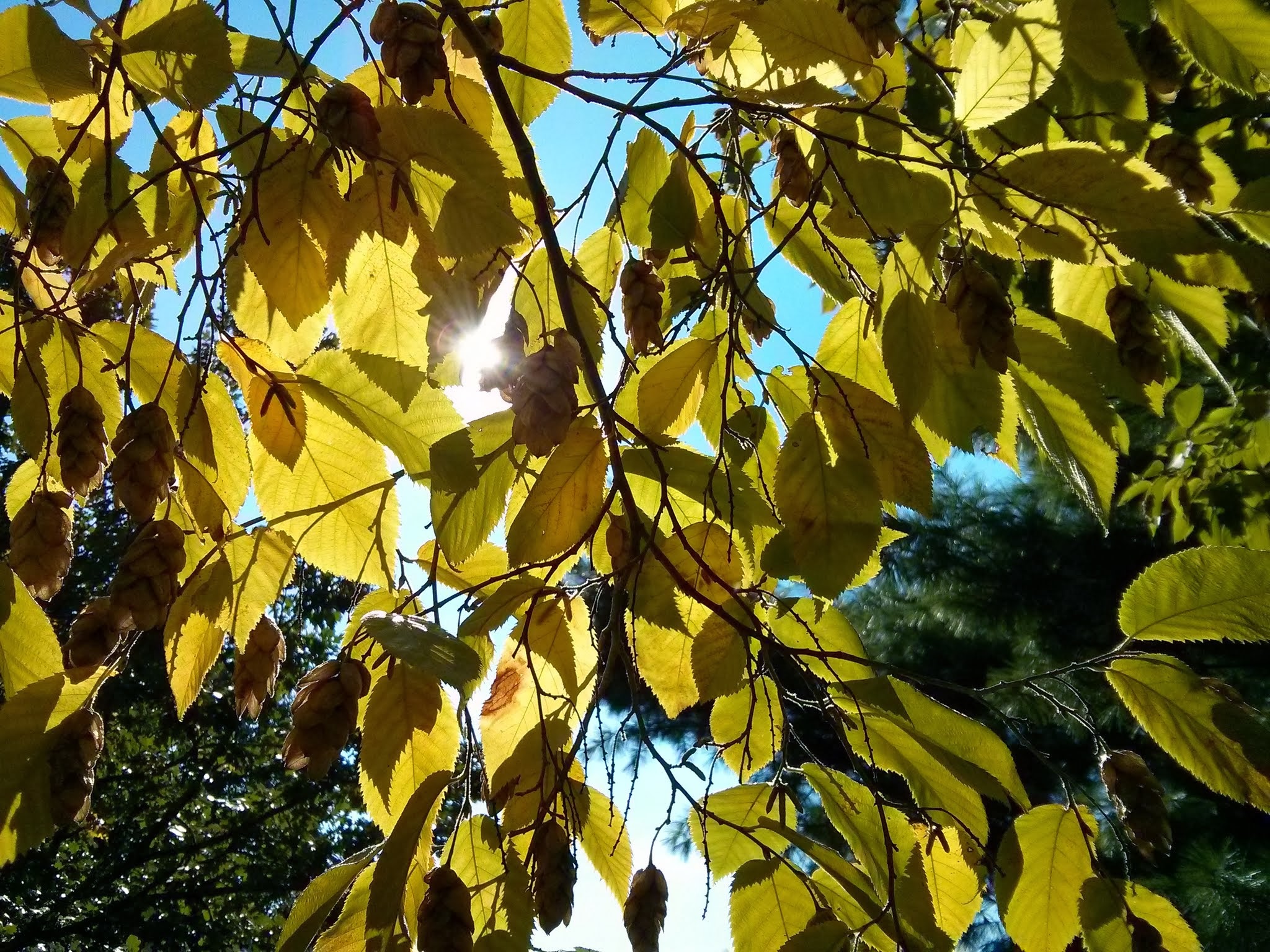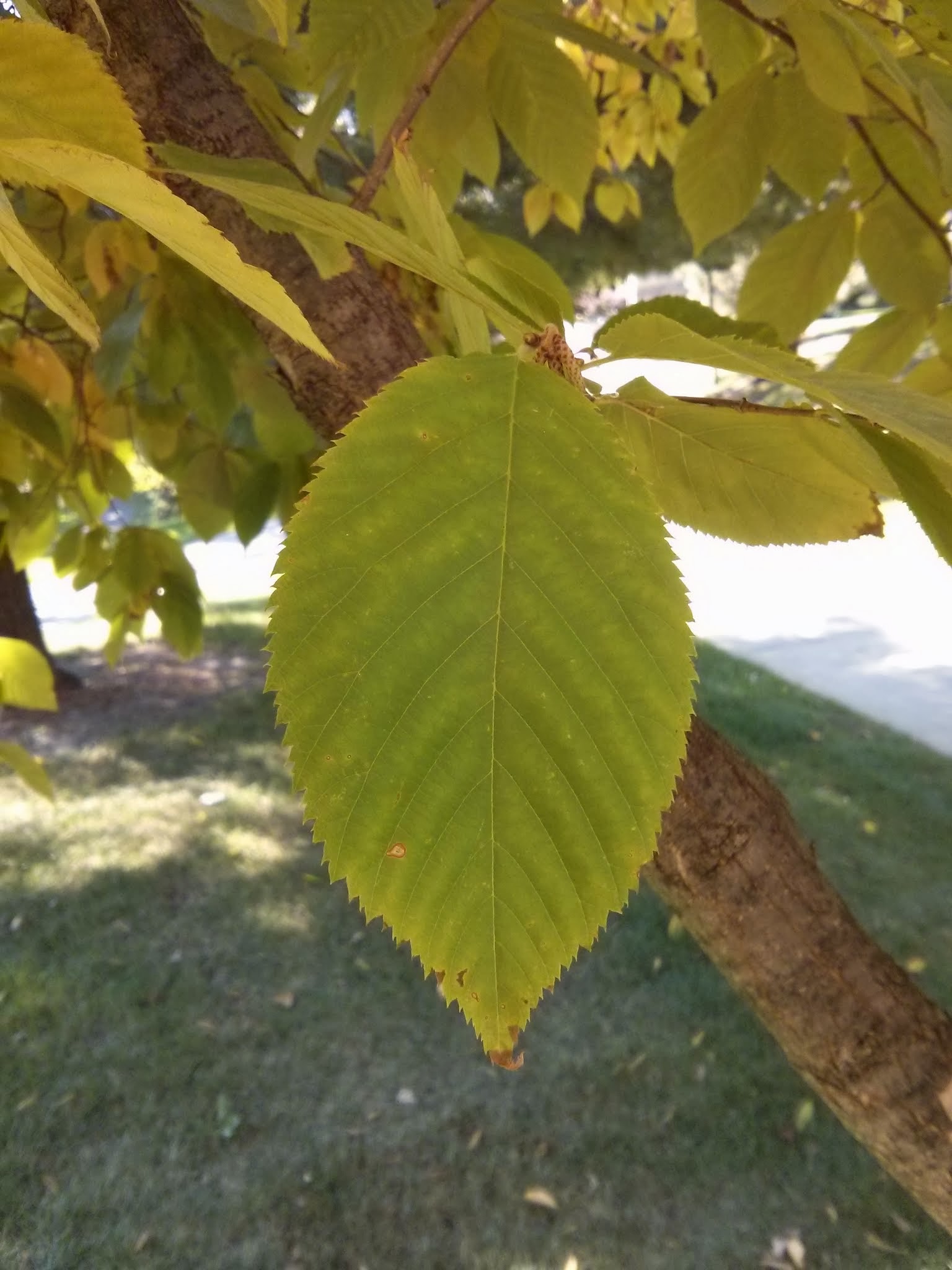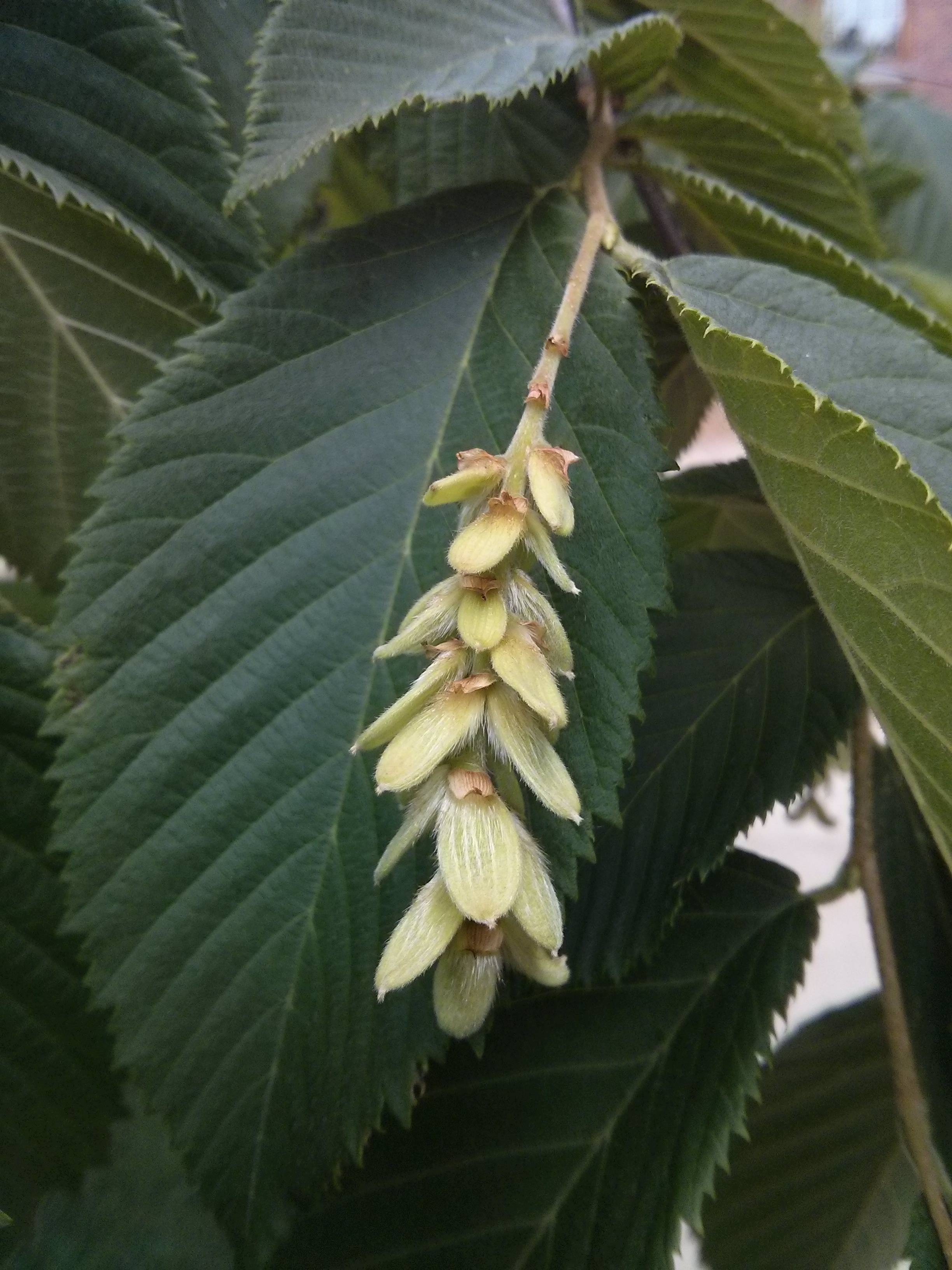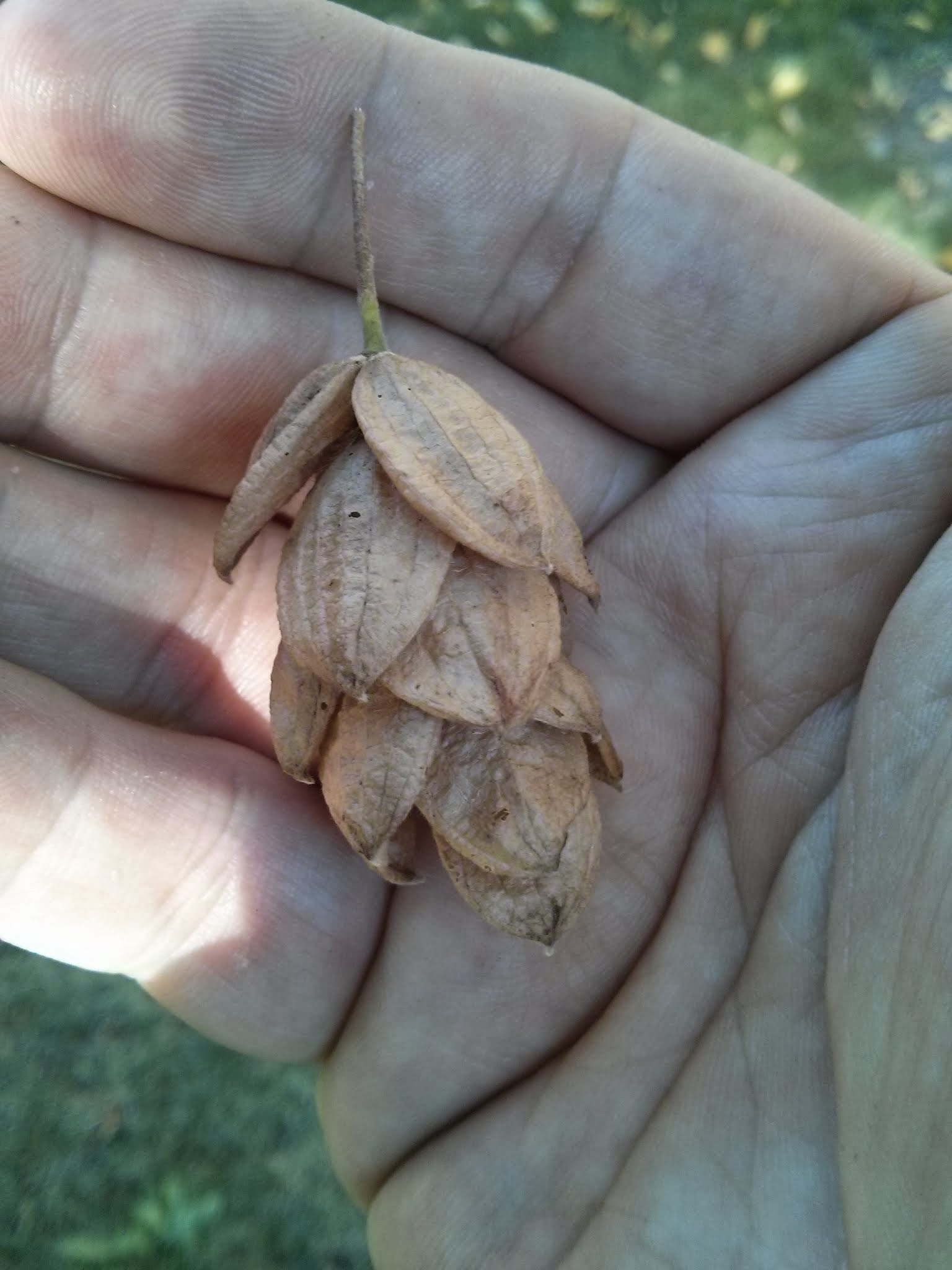Common Name: ironwood, eastern hop hornbeam
Scientific Name:
Family: Betulaceae
Genus: Ostrya
Species: O. virginiana
Hardiness Zone: 3 to 9
Height: 25 to 40 ft
Width: 20 to 30 ft
Common characteristics:
Ironwood, or eastern hop hornbeam, receives its common names from its extremely tough wood and hops like fruit. The branches are long and slender often drooping at the ends. The bark is light gray-brown, which is furrowed and ridged. Leaves are simple and grow alternately on the stem. They are 2 to 4" in length and are oblong with doubly serrate edges. The leaves are dull green-yellow in the summer, turning golden yellow in the fall. The fruits of ironwood occur in clusters that resemble hops. The fruit ripens in July and August.
Where it grows:
Ironwood prefers moist, well-drained soils. It will tolerate dry sites and alkaline soils. Ironwood can also tolerate dry gravelly soils in partial shade once established. Prefers full sun to partial shade and naturally occurs in dry woodland understory. Difficult to transplant and slow to establish. Not tolerant of salt. Prune in late winter or early spring.
How it’s used:
This tree is well suited for use in parks and lawns as a shade or specimen tree. It is not recommended for boulevards.
Ecosystem services:
This tree is used by songbirds, small mammals, and browse animals.
Where it is native to:
Native to the Midwest and the southeastern United States.
Problems:
Not susceptible to any serious insect or disease problems.
References:
Minnesota Department of Natural Resources
